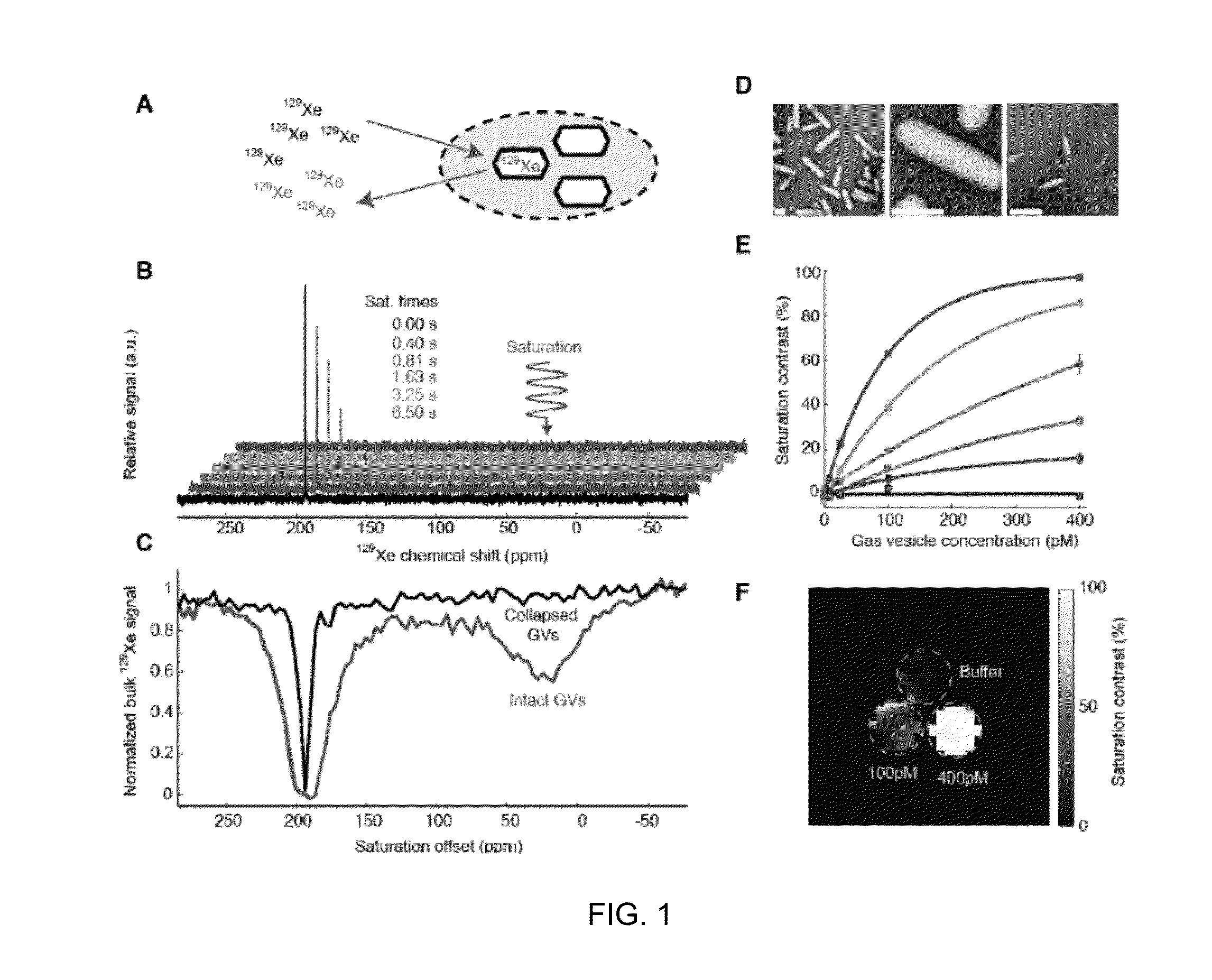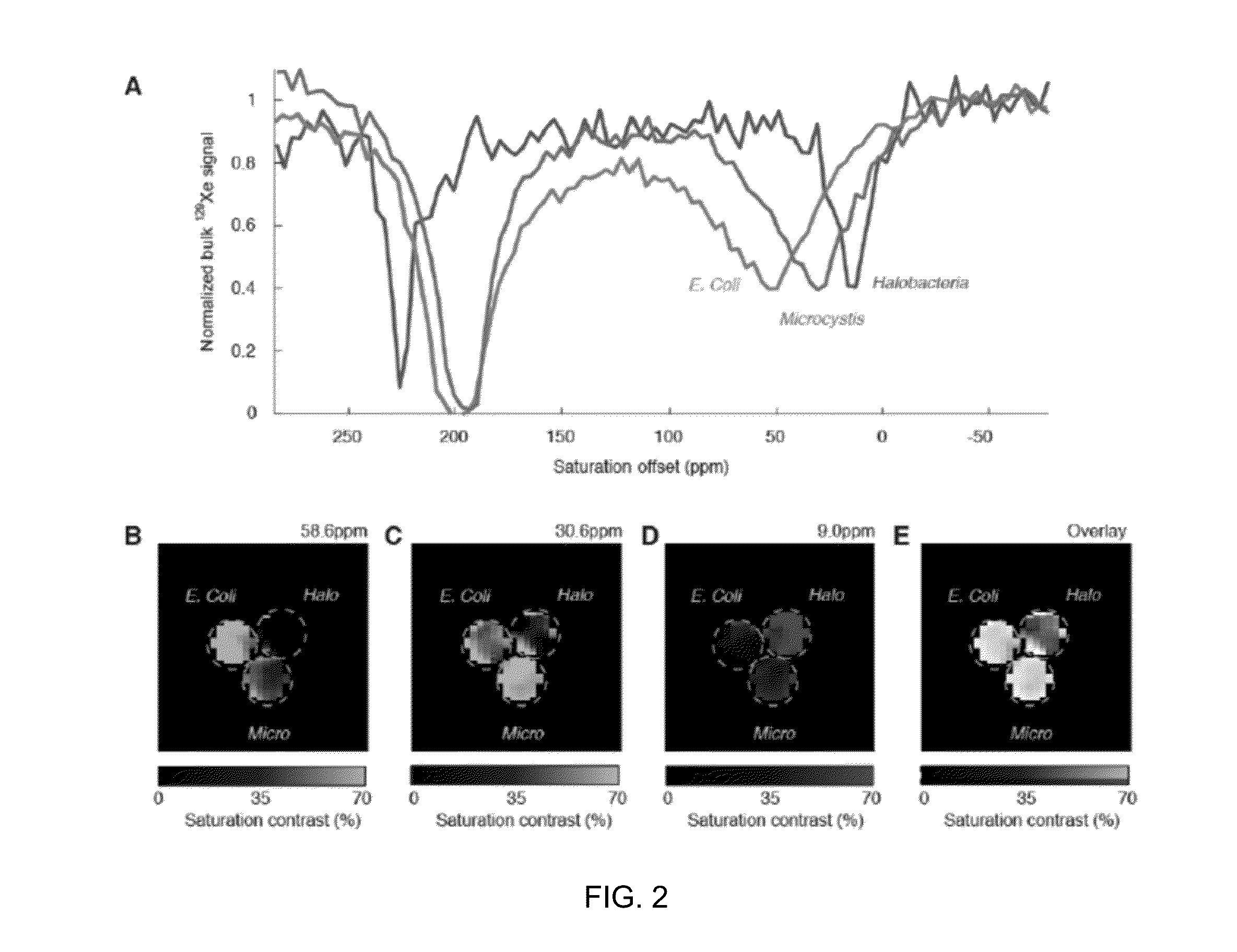Gas vesicle magnetic resonance imaging contrast agents and methods of using the same
a magnetic resonance imaging and contrast agent technology, applied in the field of gas vesicle magnetic resonance imaging contrast agents, can solve the problems of low molecular sensitivity of reporters used in previous attempts to develop molecular reporters for mri, and the lack of sensitive genetic reporters analogous to the green fluorescent protein (gfp) used in mri
- Summary
- Abstract
- Description
- Claims
- Application Information
AI Technical Summary
Benefits of technology
Problems solved by technology
Method used
Image
Examples
example 1
Materials and Methods
Cyanobacterial and Halobacterial Cell Culture
[0068]Microcystis sp. (CCAP strain 1450 / 13) and Anabaena flos-aquae (CCAP strain 1403 / 13F) were purchased from CCAP (Argyll, Scotland, UK) and cultured in sterile BG11 and Gorham's algal media, respectively, at room temperature under fluorescent lighting with an approximately 75% circadian duty cycle. Halobacteria NRC-1 were purchased from Carolina Biological Supply (Burlington, N.C.) and cultured at 37° C. in high-salt medium, under ambient light, according to vendor instructions.
Gas Vesicle Isolation
[0069]Gas vesicles (GVs) were isolated from A. flos-aquae using hypertonic lysis and centrifugally-assisted flotation. Cells were concentrated over a 0.2 μm filter and resuspended in TMC buffer (10 mM Tris-HCl, 2.5 mM MgCl2, 0.5 mM CaCl2, pH7.6). A 1:1 volume of 50% sucrose was added rapidly and the cells incubated at room temperature for at least 30 min. The solution was overlaid with a small volume of TMC and centrifug...
PUM
| Property | Measurement | Unit |
|---|---|---|
| Diameter | aaaaa | aaaaa |
| Diameter | aaaaa | aaaaa |
| Chemical shift | aaaaa | aaaaa |
Abstract
Description
Claims
Application Information
 Login to View More
Login to View More - R&D
- Intellectual Property
- Life Sciences
- Materials
- Tech Scout
- Unparalleled Data Quality
- Higher Quality Content
- 60% Fewer Hallucinations
Browse by: Latest US Patents, China's latest patents, Technical Efficacy Thesaurus, Application Domain, Technology Topic, Popular Technical Reports.
© 2025 PatSnap. All rights reserved.Legal|Privacy policy|Modern Slavery Act Transparency Statement|Sitemap|About US| Contact US: help@patsnap.com



